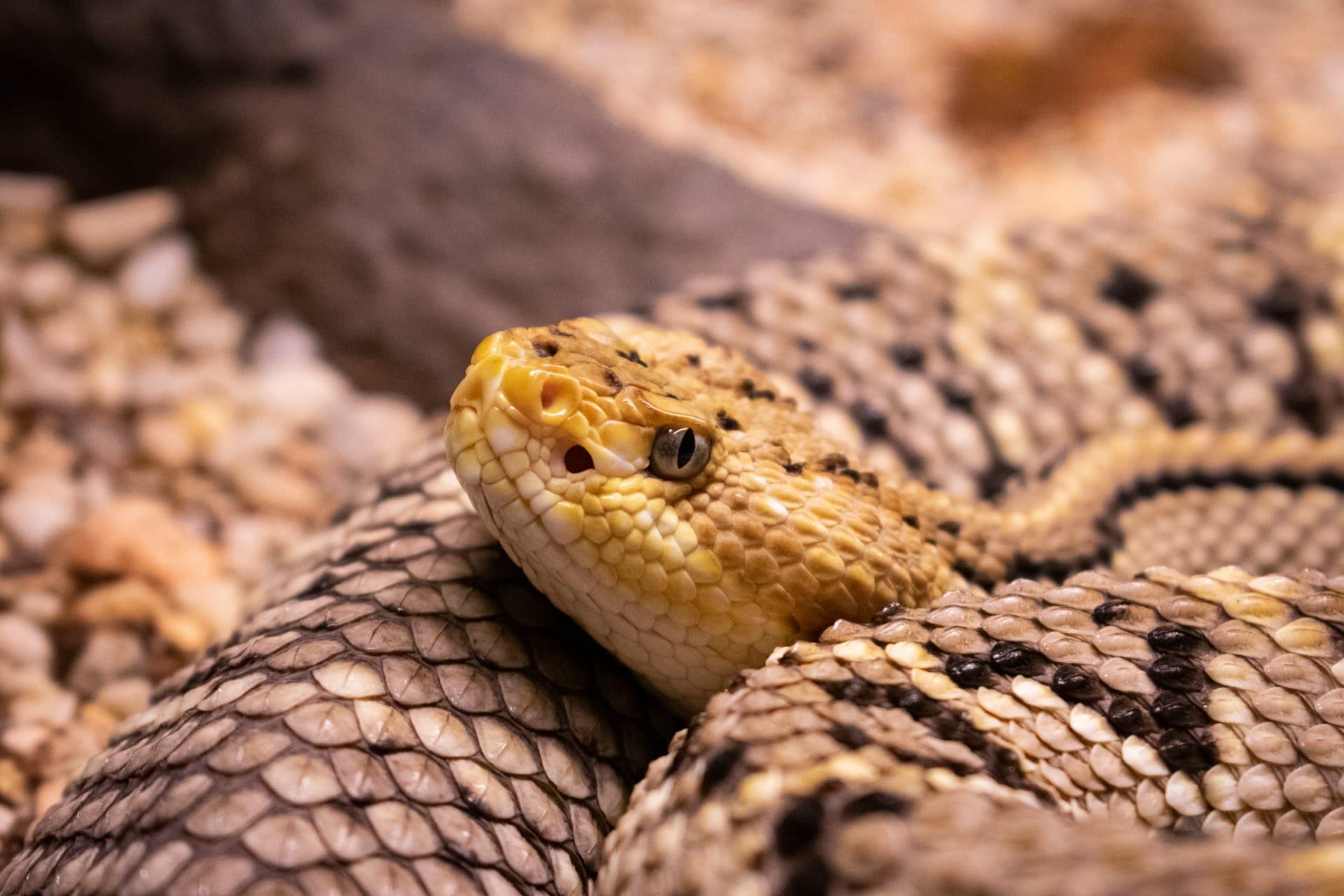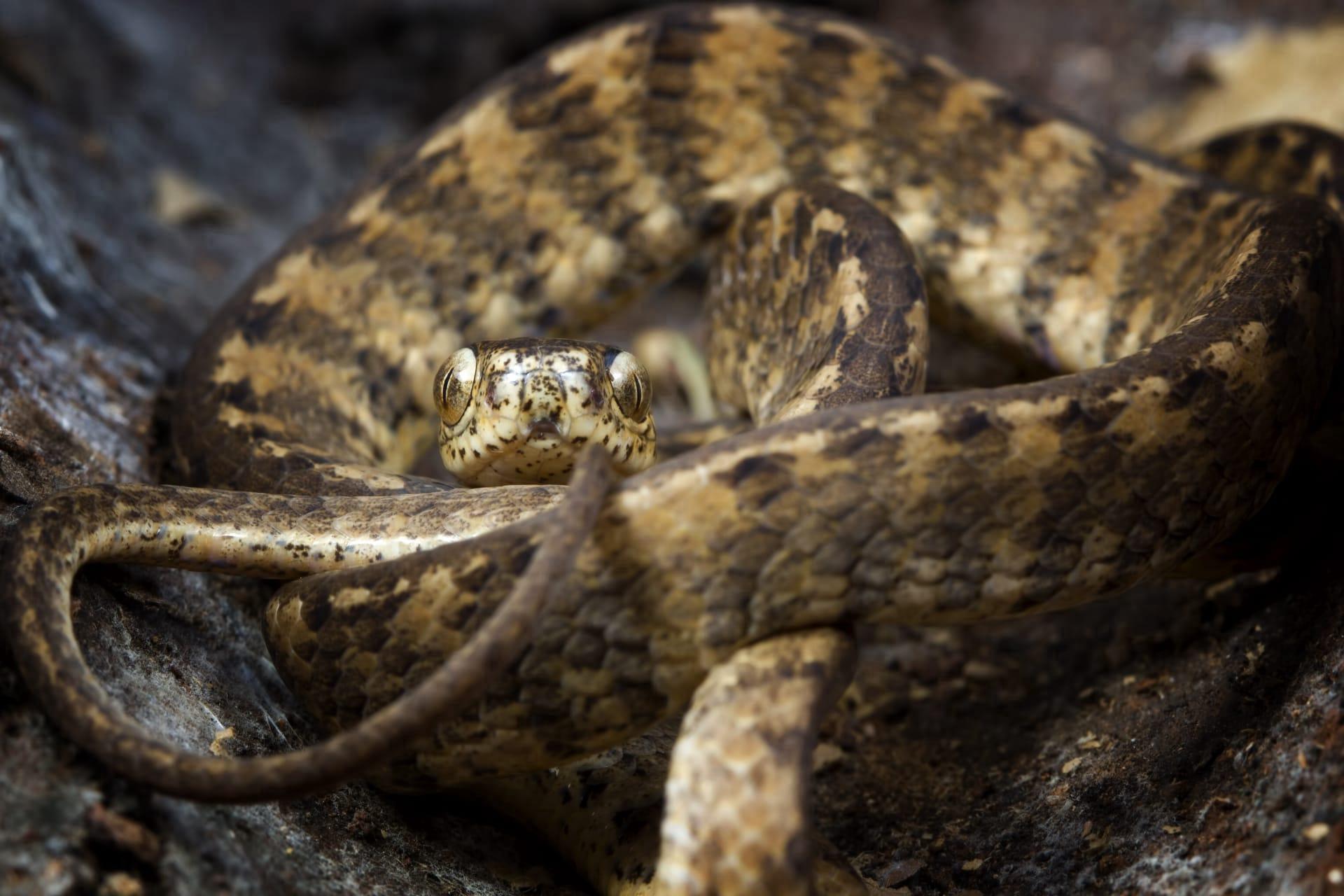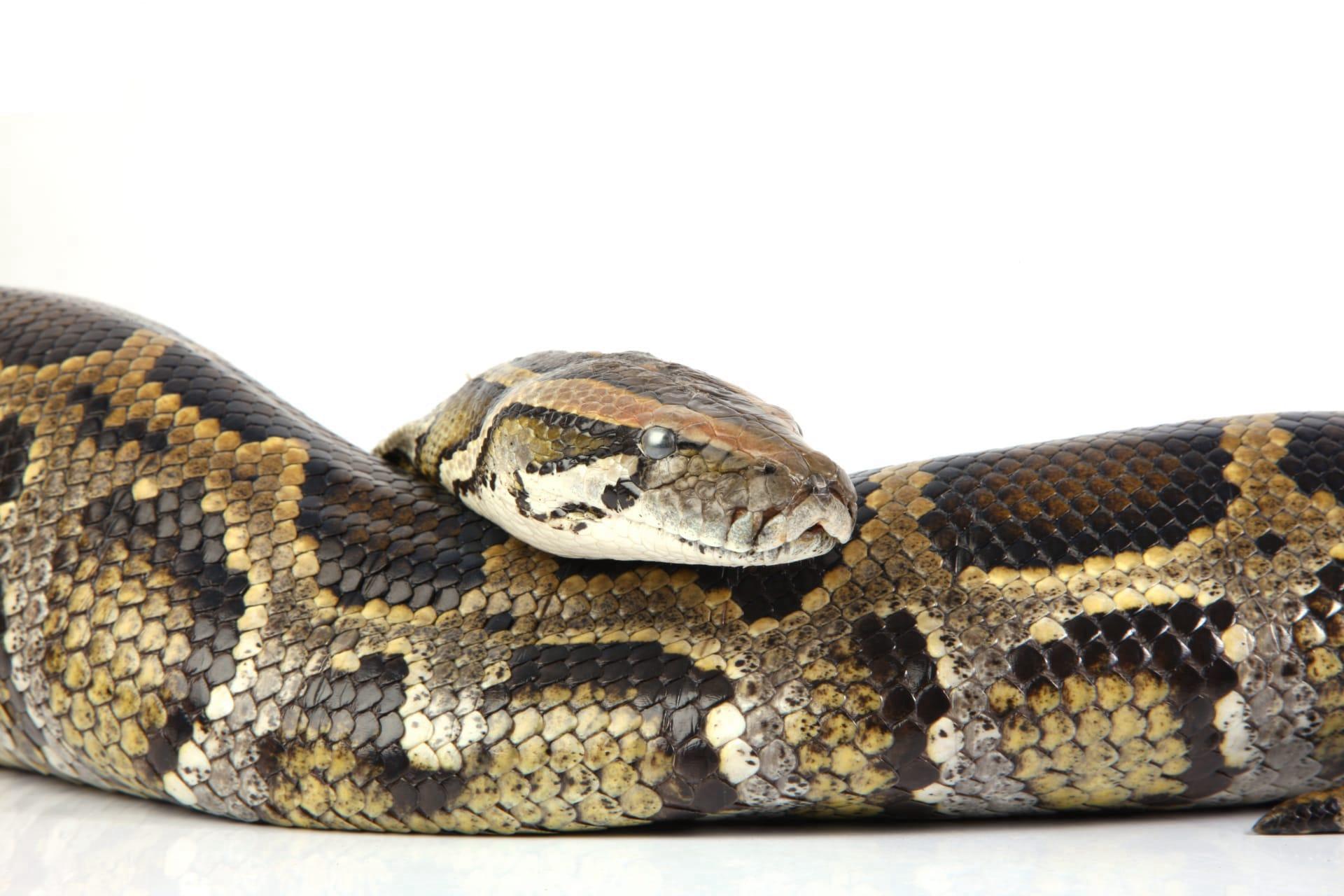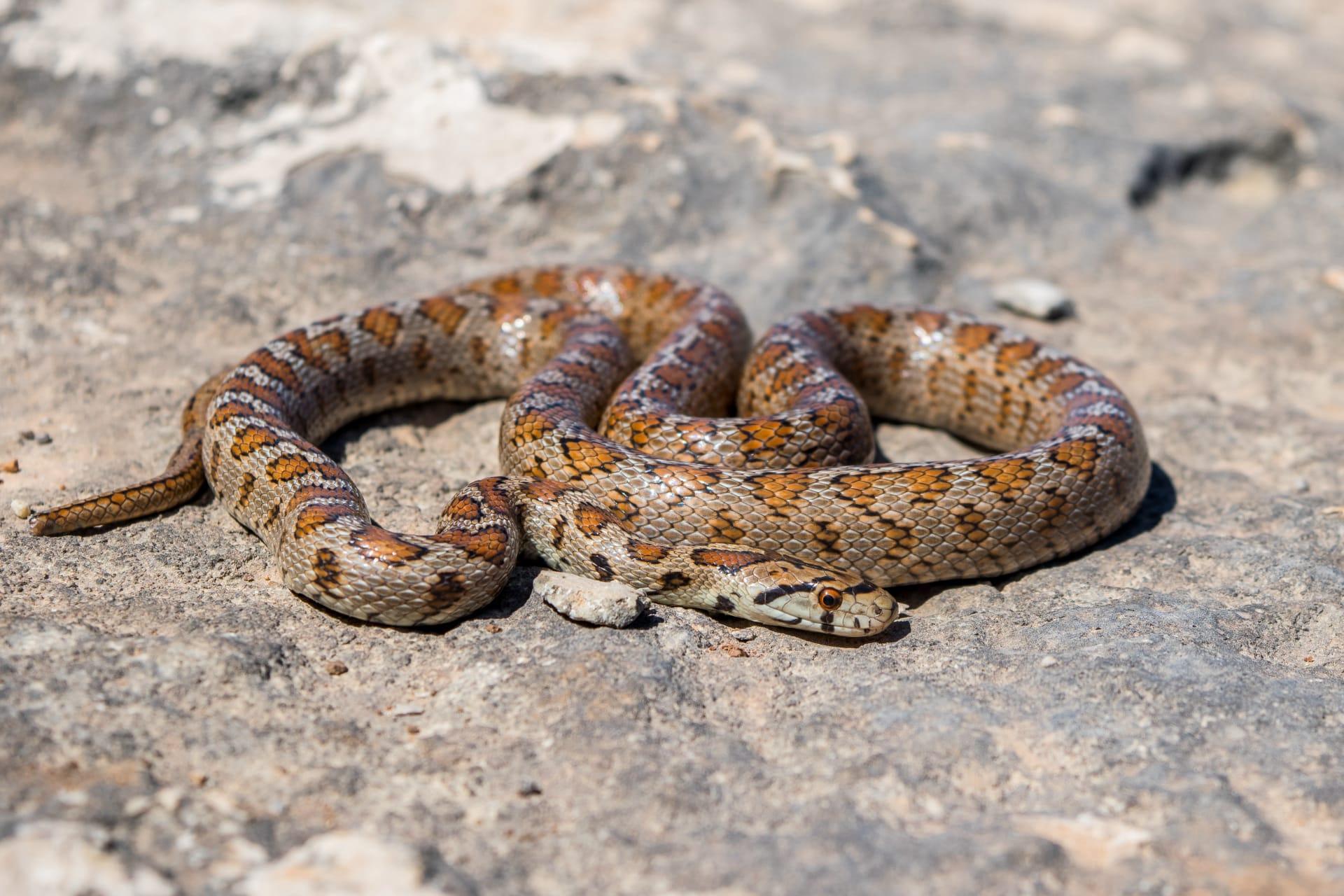Hognose Snake Trivia
- Home /
- Trivia Question /
- Animal /
- Hognose Snake Trivia
1
Question: What makes the hognose snake's nose so distinct and what's its purpose?
Answer: The hognose snake, named for its upturned snout, uses this unique nose to dig through soil and leaf litter. This adaptation is particularly useful for uncovering its favorite prey, toads, which often bury themselves in the ground. The snout shape varies among species, but it's generally shovel-like, aiding in this burrowing behavior.
Question: How does the hognose snake's diet impact its physical adaptations?
Answer: Hognose snakes have evolved specific physical traits to feed on toads, their primary prey. They possess large rear fangs and a mild venom to subdue toads, which often inflate their bodies as a defense mechanism. This venom is harmless to humans but effective against toads. Additionally, their digestive system is adapted to handle the toxins commonly found in toads.

2
Question: Is it true that hognose snakes are dangerous and possess deadly venom?
Answer: Contrary to popular belief, hognose snakes are not dangerous to humans. Their venom is mild and specifically adapted for subduing toads. While they can deliver a bite if threatened, the venom is not harmful to humans, causing at most mild swelling or itching in rare cases.
Question: Do hognose snakes really play dead when threatened, and how do they do it?
Answer: Yes, hognose snakes are famous for their dramatic defense tactic of playing dead. When threatened, they flip onto their backs, open their mouths, loll out their tongues, and sometimes emit a foul smell, mimicking death. This behavior is intended to deter predators who prefer live prey.

3
Question: How does the hognose snake's habitat influence its behavior and survival?
Answer: Hognose snakes inhabit a range of environments, from sandy pine forests to grasslands. This adaptability allows them to use their burrowing behavior to escape extreme temperatures and predators. Their coloration, ranging from brown to green with various patterns, provides camouflage in these diverse habitats.
Question: What role do hognose snakes play in their ecosystem?
Answer: Hognose snakes are vital for controlling toad populations, their primary food source. By feeding on toads, which can be pests, they help balance these populations. Their presence also provides food for larger predators, making them an integral part of the food chain in their ecosystems.

4
Question: Can hognose snakes be kept as pets, and what are their specific care needs?
Answer: Hognose snakes are popular pets due to their docile nature and manageable size, typically reaching 2 to 3 feet in length. They require a terrarium with adequate space for burrowing and hiding, a consistent temperature gradient, and a diet primarily consisting of amphibians, though captive-bred snakes often eat rodents.
Question: How do hognose snakes reproduce, and what is unique about their mating habits?
Answer: Hognose snakes are oviparous, meaning they lay eggs. Males perform an elaborate courtship dance to attract females. Females lay clutches of up to 25 eggs, which they deposit in sandy soil or under logs. The eggs incubate for about 60 days, during which the female does not guard them.

5
Question: How do hognose snakes communicate with each other?
Answer: Hognose snakes primarily use body language and pheromones for communication. During mating season, males release pheromones to attract females. They also use hissing and mock strikes as defensive signals to deter predators or threats.
Question: Are there different species of hognose snakes, and how do they differ?
Answer: There are several species of hognose snakes, including the Eastern, Western, and Southern hognose snakes. These species differ in size, coloration, and habitat preferences. Eastern hognose snakes are known for their dramatic death-feigning behavior, while Western ones are more inclined to hiss and puff up when threatened.